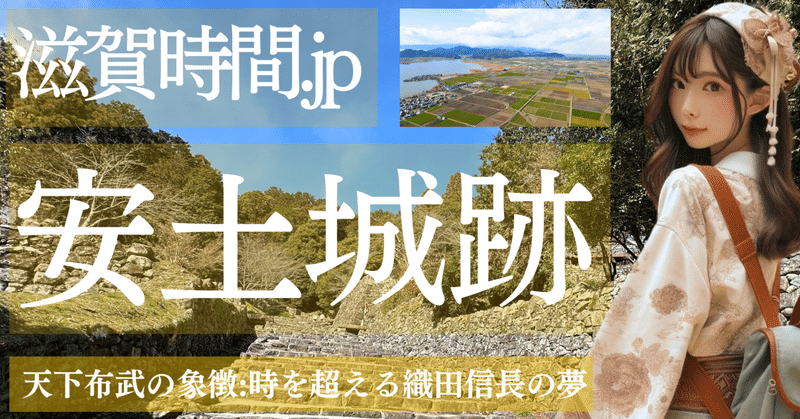
【滋賀時間.jp】第2回 天下布武の象徴:時を超える織田信長の夢
安土城は、戦国時代の絶頂期に織田信長によって建造され、日本の城郭史における画期的な建築物とされています。1576年に滋賀県近江八幡市安土町下豊浦の安土山に築かれたこの山城は、琵琶湖東岸の戦略的地点に位置し、その地理的利点は信長にとって非常に重要でした。

京都への近さと琵琶湖を利用した水運の便利さ、さらに北陸街道から京都へ向かう要衝としての地政学的重要性から、この地が選ばれました。当時の政治的緊張、特に越前・加賀の一向一揆や上杉謙信との対抗意識も、城の建造動機に影響を与えたと言われています。

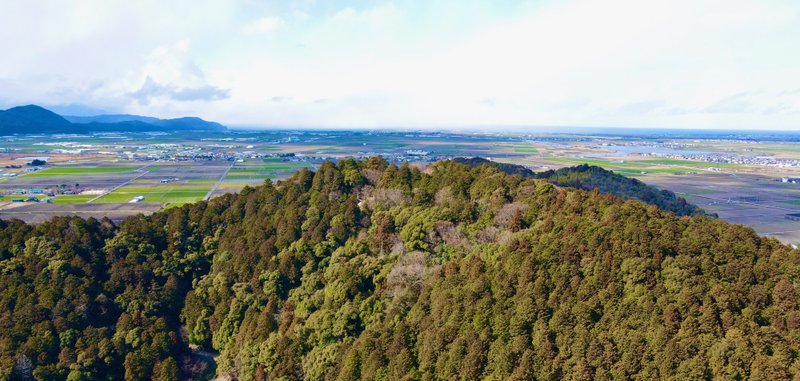
この城は、独創的な設計と絢爛豪華な装飾で知られ、特徴的な大型の天守(天主)を持っていました。この天主は、当時としては革新的な存在で、日本の城郭建築における重要な転換点となりました。複数の層からなる構造で、信長の権力と野心、そして芸術への嗜好を象徴。城は「天下布武」の理念の下、信長による天下統一の象徴として機能し、彼自身がここで生活し、家族や家臣たちも城内に居住していました。
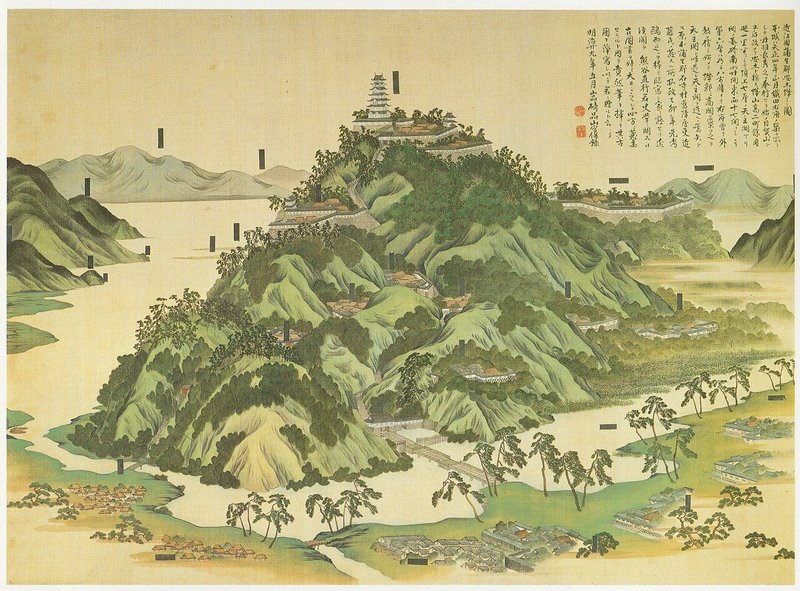
しかし、1582年の本能寺の変により信長が明智光秀によって裏切られた際、安土城もその影響を受け焼失しました。その後、城は廃城となり、現在に至るまで多くの発掘調査が行われていますが、全域の調査はまだ完了していません。遺構は国の特別史跡として保護されており、その一部は今でも訪れることができます。

ルイス・フロイスの『日本史』では、特別な塔「テンシュ」について詳細に記述されています。この塔は七重の構造を持ち、内外ともに精巧な建築技術が用いられていることが強調。内部では壁一面に色彩豊かな肖像が描かれ、外部では階層ごとに異なる色彩が施されています。特に、白壁に黒い漆塗りの窓が配され、紅、青、そして最上階は金色で装飾されています。
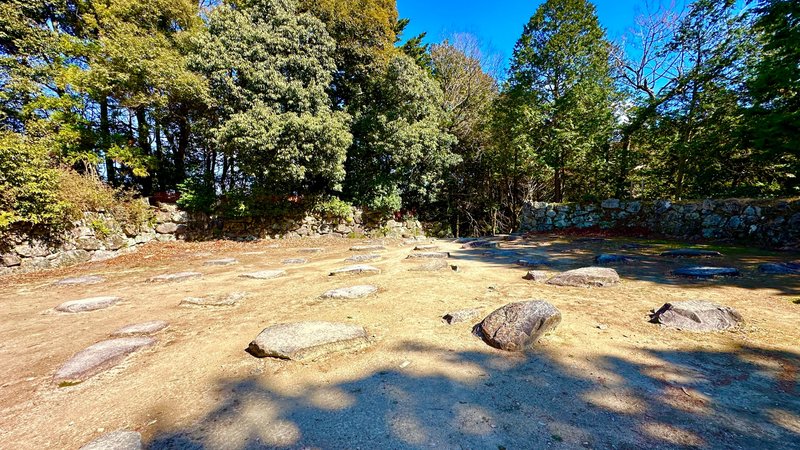

この塔は美しい瓦で覆われ、屋根は青く見え、瓦の前列には丸い頭が付いています。屋根には、気品ある技巧を凝らした雄大な怪人面が特徴的で、フロイスはこの塔を気品があり壮大な建築と評していた記録が残されています。
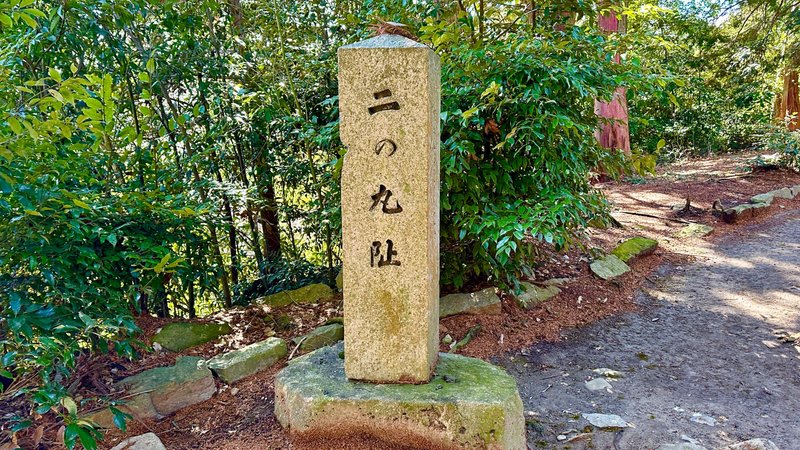
安土城の建築技術と設計思想は、後の安土桃山時代から江戸時代初期にかけての城郭建築に大きな影響を与えました。この城の設計は居住性の向上、強い宗教色の反映、そして政治的な機能の優先など、当時の社会状況や信長の個性を色濃く反映しています。

現地を訪れると、残る石垣や遺構から一時代を築いた壮大な城の規模と信長の野心を実感できます。歴史的背景や城の特徴について学ぶことで、日本の城郭史や安土桃山時代の理解が深まります。安土城がかつてどれほど壮大であったかは、山頂に至る道中、随所に残された石垣が静かに語りかけます。
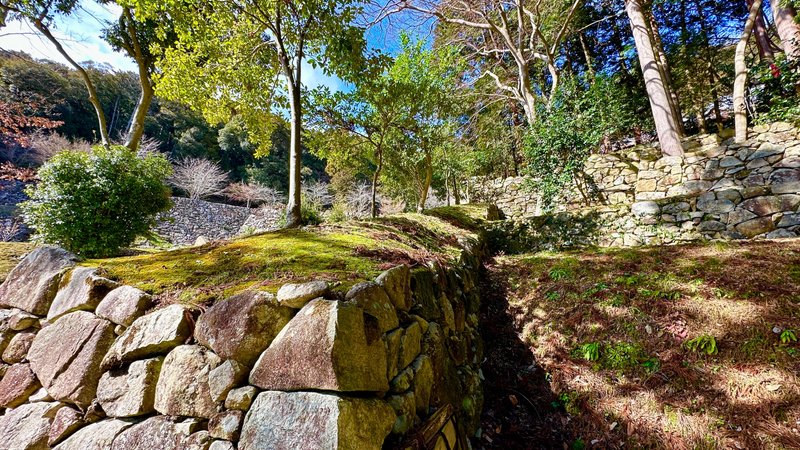
これらの石垣は、ただ堅固な城壁を形成するだけでなく、当時の建築技術の高さと信長の天下統一への努力を物語っています。山頂からの眺望は、広大な琵琶湖と豊かな近江盆地が広がる壮大な景観で、信長が天下を望んだ気持ちが容易に想像できます。

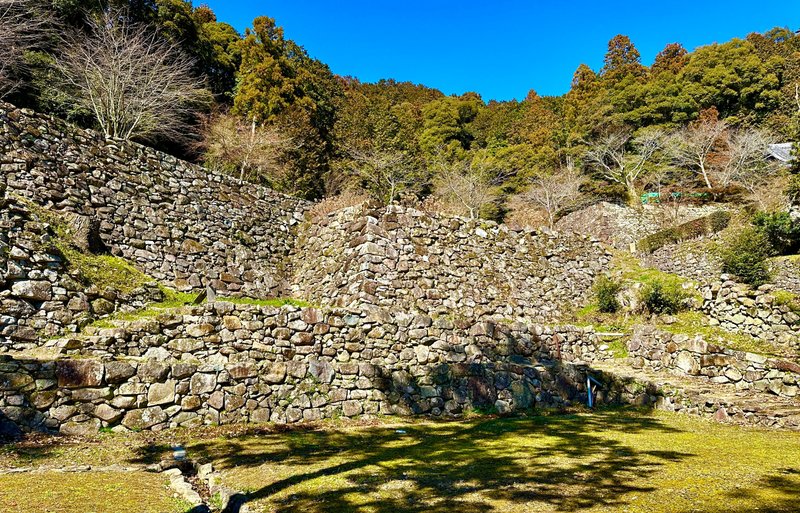
安土城のふもとから天守閣跡へと続く道のりは、急な階段が特徴であり、訪れる者をその歴史の奥深さへと誘います。古の武士たちがこの道を駆け上がったと想像すると、ただの石段ではなく、時を超えた繋がりを感じさせてくれます。一歩一歩踏みしめる度に、織田信長が築き上げた壮大な城への畏敬の念が高まります。安土城は、ただの史跡を超え、日本の歴史を象徴する場所として、訪れる人々に深い学びと感動を提供します。ぜひ訪れてほしい城の一つです。天守閣跡までの道のりは往復で1時間ほどかかるので、余裕をもったスケジュールでぜひ訪れてください。

Azuchi Castle was constructed at the height of the Sengoku period by Oda Nobunaga and is considered a groundbreaking architectural achievement in the history of Japanese castles. Built in 1576 on Mount Azuchi in Azuchi-cho, Shiga Prefecture, near Omihachiman, this mountain castle was strategically located on the eastern shore of Lake Biwa. The geographical advantages of the site were of great importance to Nobunaga, chosen for its proximity to Kyoto, the convenience of water transportation using Lake Biwa, and its geopolitical significance as a critical point from the Hokuriku Road to Kyoto. The political tensions of the time, especially the Ikko-ikki rebellions in Echizen and Kaga and rivalry with Uesugi Kenshin, also influenced the motivation for the castle's construction.
The castle was known for its innovative design and lavish decorations, featuring a distinctive large donjon (tenshu). This tenshu was an innovative presence for its time and marked an important turning point in Japanese castle architecture. Its multi-layered structure symbolized Nobunaga's power and ambition, as well as his taste for art. Under the banner of "Tenka Fubu" (the unification of the country by military force), the castle served as a symbol of Nobunaga's quest for unification, where he lived with his family and retainers.

However, the castle was burnt down during the Honnoji Incident in 1582 when Nobunaga was betrayed by Akechi Mitsuhide. Since then, the castle has become a ruin, and although many excavations have been conducted, the investigation of the entire area is yet to be completed. The remains are protected as a Special Historic Site by the nation, and parts of it can still be visited today.
Luis Frois's "History of Japan" provides detailed descriptions of the special tower "Tenshu," emphasizing its seven-layered structure and the use of sophisticated architectural techniques both inside and out. The interior walls were adorned with colorful portraits, while the exterior featured different colors for each layer. Notably, the white walls were accented with black lacquered windows, and the colors red and blue were used, with the topmost layer decorated in gold. The tower was covered with beautiful tiles, the roof appeared blue, and the front row of tiles featured round heads. The roof was distinguished by its noble craftsmanship and majestic oni (demon) faces, with Frois recording his admiration for the tower as a dignified and magnificent construction.
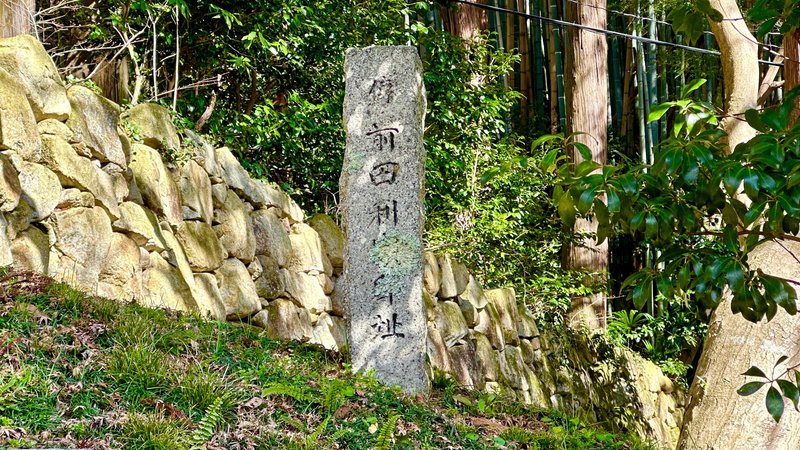
The architectural techniques and design philosophy of Azuchi Castle greatly influenced castle architecture from the Azuchi-Momoyama period through the early Edo period. The design of the castle reflected the societal context, Nobunaga's personality, improvements in habitability, a strong religious influence, and a prioritization of political functions.
Visiting the site allows one to grasp the grand scale of the once-majestic castle and Nobunaga's ambition through the remaining stone walls and ruins. Learning about the historical background and features of the castle deepens the understanding of Japan's castle history and the Azuchi-Momoyama period. The stone walls silently convey the grandeur of Azuchi Castle and the architectural sophistication and effort towards unification under Nobunaga. The view from the summit offers a breathtaking landscape of Lake Biwa and the rich Omi basin, easily evoking Nobunaga's aspirations for dominion.

The journey from the base of Azuchi Castle to the remains of the donjon is characterized by steep stairs, inviting visitors into the depth of its history. Imagining ancient warriors rushing up this path transcends mere stone steps, evoking a timeless connection. With each step, reverence for the grand castle built by Nobunaga grows. Azuchi Castle transcends a mere historical site, offering deep learning and inspiration as a symbol of Japan's history to its visitors. It is highly recommended as a must-visit castle. Allow approximately one hour for the round trip to the donjon, and be sure to visit with a generous schedule in mind.
この記事が気に入ったらサポートをしてみませんか?
